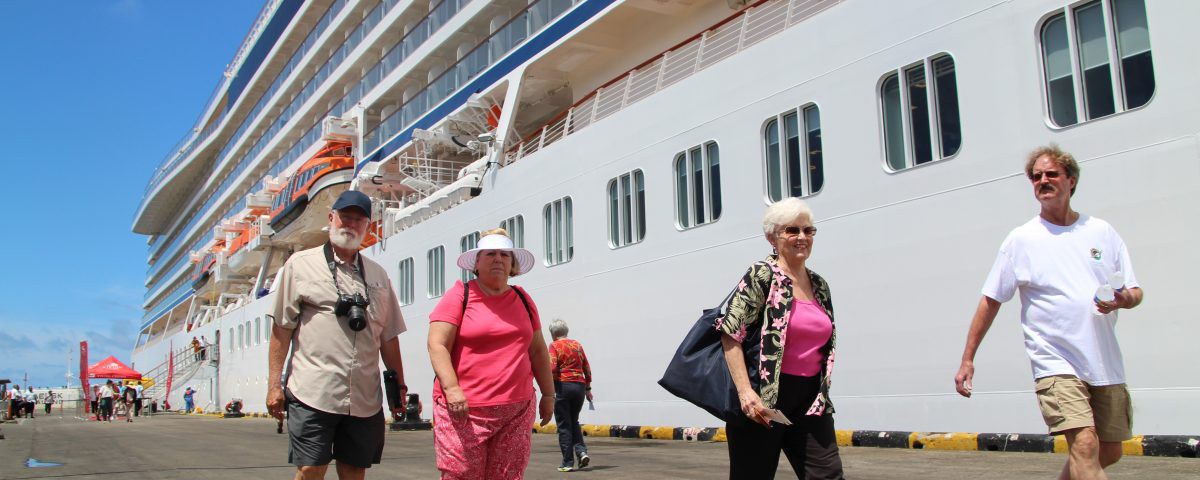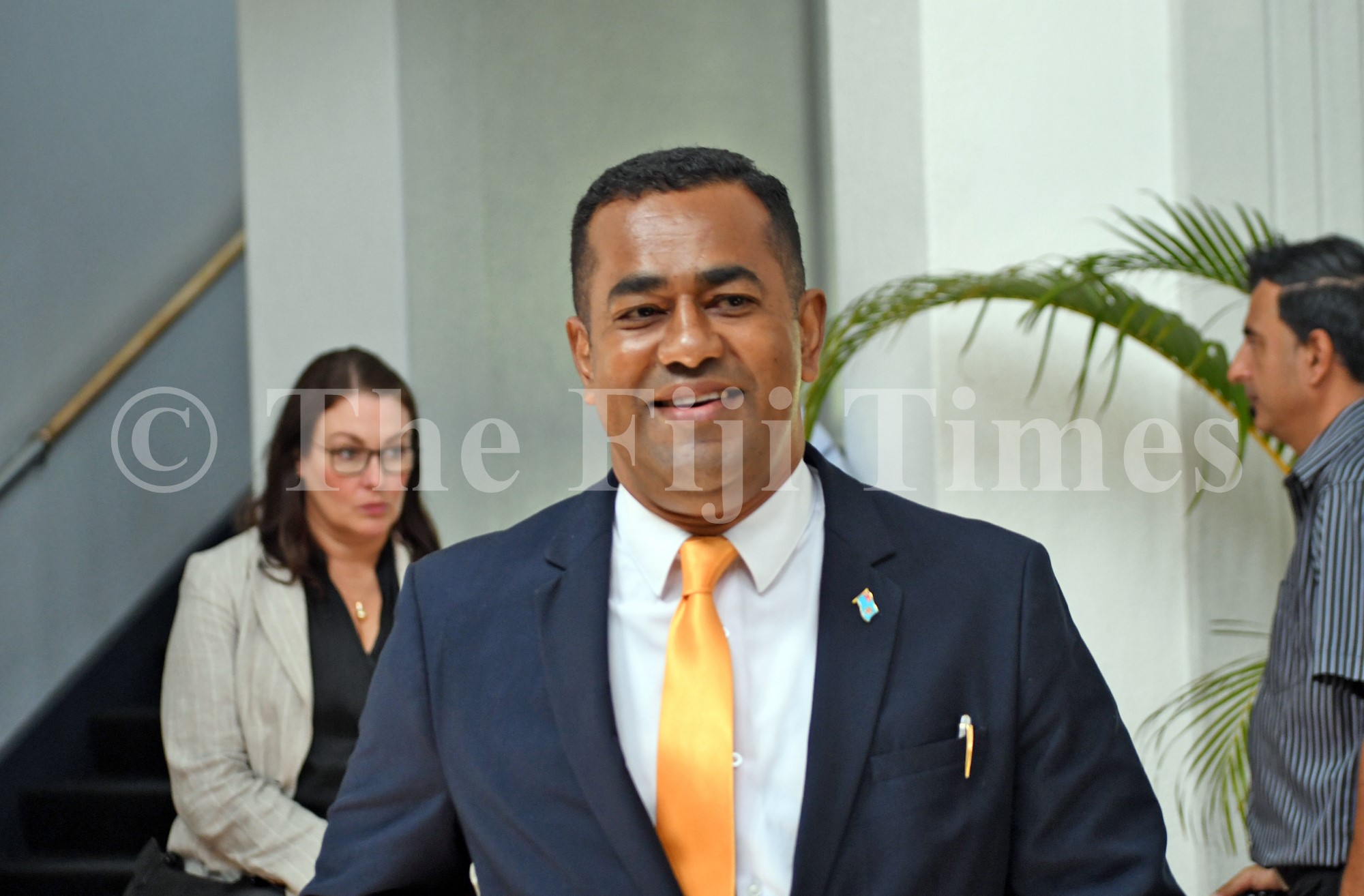The cruise tourism industry has a lot of potential for Fiji to invest and garner more profit to the economy and sector as a whole.
With the release of the Cruise Tourism for Economic Growth in Fiji study on November 5, in Suva, a wide range of areas were highlighted which needed focus to capitalise on.
The International Finance Operations Officer – Tourism Jessie McComb said this work was closely linked to the country’s national tourism strategy Fijian tourism 2021.
According to her the FT2021’s objectives was to increase the value of tourism to the local economy and spread the value throughout the country.
“Cruise is especially important to bring tourism in remotely rural areas that are accessible only to ships,” she said.
“Cruise sectors are growing both locally and in Fiji over the past nine years cruise arrivals in Fiji has increased fourfolds.”
The cruise market in Australia had grown rapidly which was a 30 per cent growth since 2015 and was now the fourth largest market globally.
“Better understanding of the cruise market in Australia is critical as Australia is a tourism outlet for Fiji.
“While trends in shorter cruising are growing, Fiji can only be integrated from 12-plus day itineraries.
“To help the private sector donors and governments make evidence-based decisions around cruise and to gain more value for this sector, this report runs a platform that could be used to support strategic targeted development investment.”
The study was undertaken in Suva, Lautoka, Denarau, Savusavu and Dravuni from December 2018 to March 2019 with these five ports representing the entirely large cruise ship port calls into Fiji.
The carnival cruise line and royal Caribbean international ships had participated in the survey as mentioned in the study.
“To understand passenger spending we surveyed passengers on board carnival cruise lines covering about 7000 passengers and 60 crew members, with a passenger response rate of about 45 per cent.
“IFC also conducted surveys with businesses on all ports expect for Dravuni.
“The study found that cruise contributes $F44 million to the economy and provides an indirect contribution of $F46.6m.”
She said the indirect contribution was a result of local businesses using the cash flows from the cruise trips activity to purchase the inputs required to carry out their business activities.
“On average one cruise ship voyage brings in a little over $F300,000 in direct expenditure and each passenger spending $90 on average,” she said.
“Passengers account for majority of overall expenditure at 73 per cent of direct expenditure which primarily increases cruise port purchases.
“And cruise companies account for 24 per cent of expenditure while the remaining three per cent is spending from crew.
“Within the direct economic impact crew spent $F1.4 million and cruise companies spent $F10.6 million and that cruise company spending is coming from port fees and birth fees, sometimes hiring of tenders to get people from the boats to the shore and Customs and immigrations fees as well. The majority of passenger spending was on tours and excursions as people liked to participate in activities when arriving into their destinations as highlighted by Ms McComb.
“70 per cent come from pre-booked tours and 6 per cent come from tours on shore so people who caught a tour after they departed their ship in that destination.
“The remaining spending is on shopping with handicraft souvenirs and clothing at 13 per cent and food and beverage at 4 per cent.
The study revealed the highest daily expenditure was in Lautoka $F118, followed by Suva $F104, Denerau $F102 and Savusavu at $F56.
The lowest average expenditure per passenger was revealed to be on Dravuni Island with a $F3 daily spending.
According to the study, the lower spending on Dravuni Island is because of the unavailability of pre-booked tours and inadequate retail infrastructure.
The lower spending on Dravuni Island also suppresses the overall average passenger expenditure per port.
“We found that people who did disembark and go to Dravuni were very happy with their experience and loved the authenticity of what they had when they were on the ground,” said Ms Mc-Comb.
“However, there wasn’t enough opportunities for them to spend, there weren’t enough shops and there weren’t enough stores and they really wanted to do more.
“Suva and Lautoka received the largest overall expenditure, as they received the largest portion of cruise ship calls.
She added Suva received 40 per cent of all port calls resulting in 44 per cent of all direct expenditure and Lautoka received 20 per cent of all calls resulting in 31
per cent direct expenditure.
The report also mentioned the longer passengers stayed at a port the higher they spent however, only one quarter of the passenger is staying longer than five
hours.
This presented an opportunity of increasing overall expenditure by extending the amount of time in each destination.
She said there was a strong positive correlation between passenger satisfaction and
spending with Denarau being the highest rated port for customer satisfaction.
“Those with pre-booked tours spent more on retail and food and beverages as well.
“Disembarking was also higher in Denarau because of the positive perception of the port.
“Denarau is generally perceived as the modern, contemporary, clean style port with
western amenities and a range of different market options that visitors can visit.
It was revealed that passengers noted the scarcity of authenticity in Denarau as they wanted to be exposed to more traditional Fijian experience.
It was revealed through the study, however, as 47 per cent of passengers reported unmet spending needs and would have spent more if more onshore options
were available at the time.
This was a strong opportunity for handicraft, clothing, tours and excursions as well as food and beverage.





